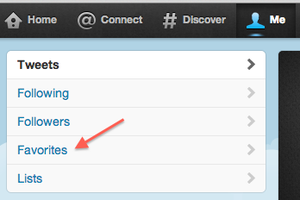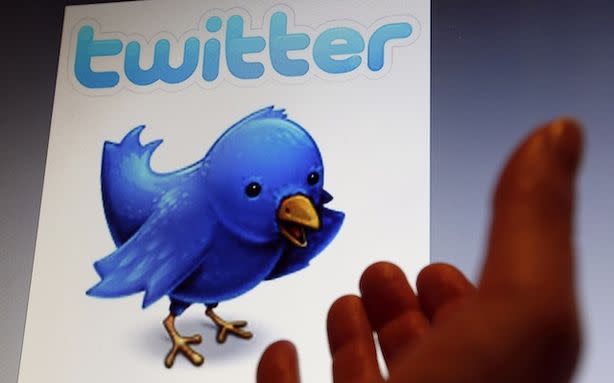A Complete Guide to the Art of Twitter Favorites
In the digital Wild West that is Twitter, favoriting is the safest way to make your presence known. Unlike a retweet or a tweet that your legions of followers will see, judge, and possibly ridicule, the favorite is sly. That's because only two people — the favoriter and the favoritee — know it happened. A few other creepers could potentially see its traces below the tweet, but that takes sleuthing and effort. That's the beauty of the favorite.
RELATED: Dessert, Viperfish, and the American Dream
As Twitter has developed as a medium where what you say can have real consequences, users have started clicking that little star in lieu of adding more noise to the chaotic conversation. Last May, Twitter users favorited things 1.6 billion times, four times more than they did a year earlier, reports The Wall Street Journal's Katie Roseman. But despite having a warm and fluffy name like "favorite," there is true technique to its usage. The favorite is nuanced. For those of you new to the practice, The Atlantic Wire has put together this complete guide to the art of Twitter favorites.
RELATED: Doctors, Nudists, and 'Pulling A Bristol'
The Practical Favorite: Some people use the favorite for its most practical purpose — to bookmark tweets for later. Twitter saves all the tweets a person favorited in one easy-to-find place under the "Me" tab. An informal survey of Atlantic Wire writers reveals that at least six of us use the fave button as a way to catch some of the tweets passing by with captivating articles or possible story ideas for later.
RELATED: Twitter Verification Has a Pricetag: $15,000
The "Fist Bump" or Thank You Favorite: Earlier this year, Twitter noted a rise in favorites on tweets only meant for one other person (i.e., a conversation). BuzzFeed's John Herrman dubbed this the "fist-bump" tweet, noting that more people were using Twitter to say thanks or to indicate a positive sentiment for something someone tweeted at you. For example, below, Adam Pash is saying "thanks" by using the star for a tweet about his departure from Lifehacker.
RELATED: Twitter's Hands-Off Approach to Tweeted Terrorism
RELATED: Lyme Disease, Bubonic Plague, and Chris Rock's Hat
Or, when someone tweets out a story of mine, I'll favorite it as a way to show my appreciation rather than retweeting that tweet or risk looking like a total dweeb by replying with thanks to all the people who tweeted at me.
The Hate-Fave: On the other, meaner end of the spectrum, we have the "hate-fave," which The Awl's Choire Sicha calls "the most perverse thing you can do" to someone totally awful, as he told The Journal's Roseman. Basically, it's just favoriting annoying or rude or hateful tweets — smiling at a person yelling in your face. Some might call it taking the high road, others passive aggressive. Either way, it works.
The Practical Hate-Fave: "I fave to remember to make fun of something later," explains The Atlantic Wire's Elspeth Reeve, who uses this hybrid of both the practical and hate-fave methods. She favorites something as a "hate-fave." This helps her remember to "hate-read" the article later or use the sentiment in an article of her own.
The LOL Favorite. Much as kids these days use "lol" to punctuate a conversation, people have started to fave for the same reason. The Atlantic Wire's Philip Bump says he does it "to end a conversation by saying 'Saw this, good joke, nothing else to add.'" Sometimes, as you're tweeting back-and-forth with someone, instead of thinking of a better zinger or continuing down a time-consuming road of reply tweets, you can favorite to end the convo.
The Too-Hot-to-Tweet Favorite. Some people can tweet and retweet without abandon. Not everyone feels that way, though, especially if there are workplace rules to consider. Instead of risking it, one Wire writer favorites zingers she can't retweet because the content is too sensitive. Others say they favorite inside or esoteric jokes because they don't want to spam their followers.
The Here-Here Favorite. The most literal use of the favorite — and my personal favorite — is as an endorsement. If you really like a joke or someone's opinion or the content of the tweet, a star is a nice way to privately tell someone you liked it. Sicha, for example, will use it to back one side in a Twitter fight when he doesn't want to get involved — it's a virtual gold star, if you will.
The Spam Favorite. Like everything else on Twitter, some favorites are from robots.
To some, this recent surge in favorites is not welcome. "I always appreciate when someone 'favorites' one of my tweets, but, at the risk of sounding thankless, I wish they would just retweet," The Atlantic Wire's Alexander Nazaryan said. "The 'favorite' seems like a half-hearted measure." But that's shortchanging the power of the favorite. It's time to embrace the favorite and start using it responsibly.



